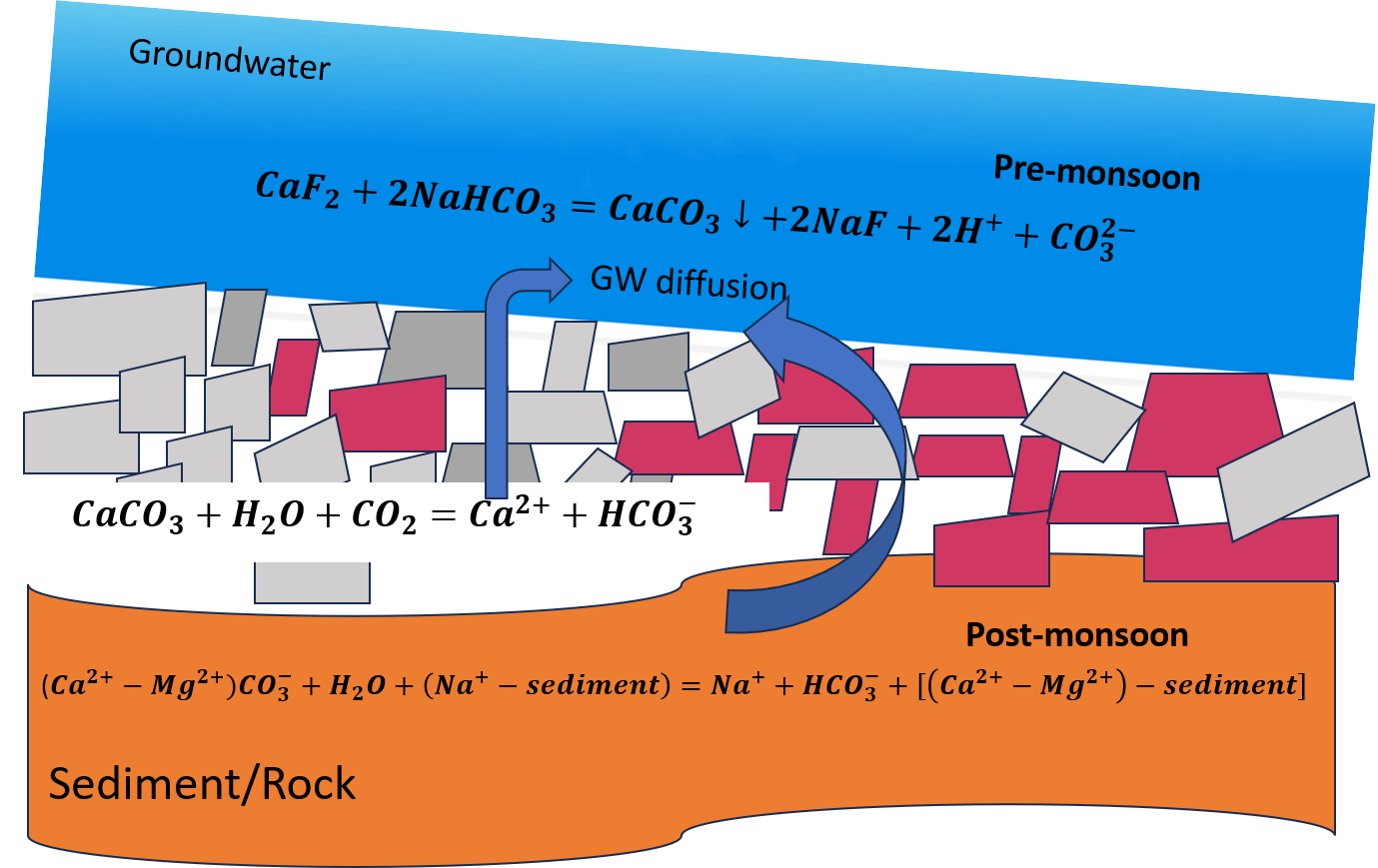
A total of 32 groundwater samples collected from two blocks in the Gariyaband District of Chhattisgarh, India, were analyzed to investigate the spatial and temporal variability of fluoride contamination. Precise fluoride concentration in the groundwater was measured using a fluoride ion-selective electrode. The Piper trilinear diagram and Gibbs plot were generated using MODFLOW and PHREEQC models to study factors controlling groundwater chemistry. Groundwater samples from both the blocks revealed a maximum of 4.0 mg/L fluoride in the pre-monsoon season (PRMS) and 6.2 mg/L fluoride during the post-monsoon season (POMS), which are beyond the permissible limits specified by the WHO and BIS (1.5 mg/L) in drinking water. The statistical analysis revealed that a high third quartile score (Q3) for Cl- and max. score for Ca2+ (Box-Whisker plot) in Devbhog relate to higher F- concentrations in groundwater. Statistical analysis showed the general dominance of the cations Na+>Ca2+>Mg2+>K+ and the anions Cl->HCO3->SO42->F- in the groundwater. Pearson correlation analysis presented a low positive correlation of F- with Na+ (r<0.1); p<0.001 during PRMS, and a significantly strong correlation with Ca2+ and CO32- (r>0.6); p<0.001 during the POMS. The region is dominated by Ca- Mg-Cl-HCO3 type water. Characterization of the rocks using SEM-EDX confirmed the presence of fluoride-rich minerals, whose weathering and subsequent dissolution as the primary factors influencing ionic chemistry in groundwater.
Total file downloads: 8